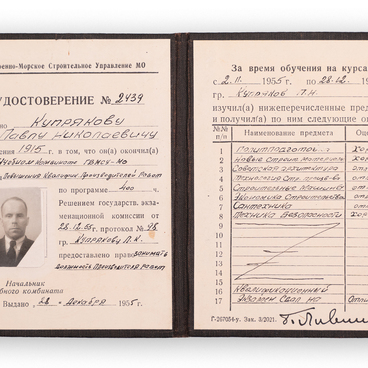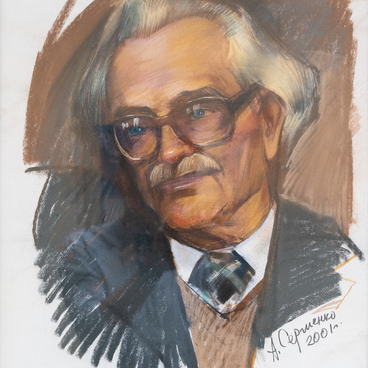The museum showcases a letter from the Academy of Sciences of the Estonian SSR addressed to the head of the Construction Department of the Baltic Fleet and officer Boris Fulik. It expresses gratitude for the “systematic and comprehensive assistance to the Experimental Base of the Academy of Sciences in the construction and fitting of semi-industrial fine chemicals industry equipment.”
Among the authors of the letter was the then President of the Academy of Sciences of the Estonian SSR, Johan Eichfeld. Eichfeld was a Soviet biologist, breeder and statesman. He was born in Estonia and graduated from the Petrograd Agronomic Institute, where he was a student of the prominent geneticist, botanist and breeder Nikolai Vavilov. In the 1930s and 1940s, Eichfeld became first the director of the Polar Department, and then of the Polar Experimental Station of the Institute of Plant Industry. In 1935, Johan Eichfeld became an academician of the All-Union Academy of Agricultural Sciences named after Lenin. He became an academician of the Academy of Sciences of the Estonian SSR in 1946, and a few years later was appointed its director.
Eichfeld mainly dealt with the problems of promoting agricultural crops in the Far North, reclamation and cultivation of swamp and mineral soils of the north, and agricultural technology. Johan Eichfeld bred several early-developing varieties of the main crops, suitable for the northern climate. In 1942, he was awarded the Stalin Prize of the 1st degree.
The Academy of Sciences of the Estonian SSR was
founded in 1938 as a scientific community consisting of two sections —
humanities and natural sciences. Each of them included 10 people. The first six
members of each section were to be appointed by the President of the Republic
on the proposal of the Minister of Education. Subsequently, the academicians
themselves had to choose one new member each year, alternately in each of the
sections, until they reached the full capacity of 20 people. Upon reaching the
age of 70, full members became honorary members, thus making room for a new
member. The institution of corresponding members was also envisaged, but it was
never brought to life. The organization became the Academy of Sciences of the
Estonian SSR in 1946. It was located in Tallinn, and some of the institutions
were located in Tartu.


